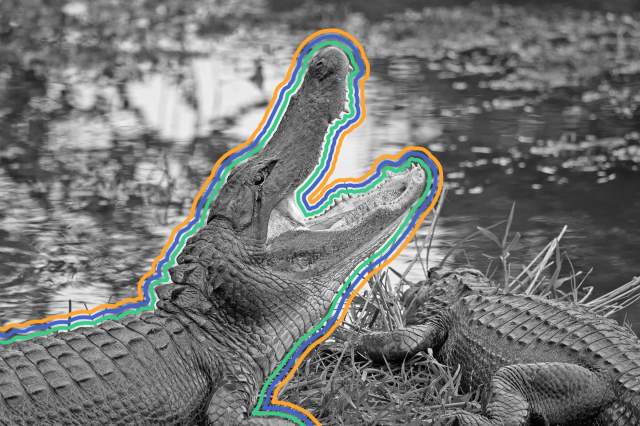
Indigenous Peoples Have Resided in the Everglades for Thousands of Years
Indigenous populations have long inhabited the Everglades. Among the earliest to call the area home were the Calusa Native Americans, who arrived sometime around 1000 BCE. They developed a powerful society that controlled much of South Florida. The Seminole and Miccosukee peoples also prospered here, and visitors can learn more about the history and culture of the former at the Big Cypress Reservation. Another notable group who made their living off the Everglades are Gladesmen, the husbands and sons of some of the area’s first Anglo American settlers in the early 20th century. They navigated the waterways via narrow boats called glade skiffs, at times spending several months in isolation while hunting and fishing in the vast wilderness.

The Everglades Is a River
While many assume that the Everglades is one enormous swamp, it is technically a shallow and slow-moving river. Conservationist Marjory Stoneman Douglas, who campaigned against development in the area, christened it the “River of Grass” in 1947 because of the swaying sawgrass marsh that grows up from the waterbed. Water in the region flows south from Lake Okeechobee — Florida’s largest lake — toward the Gulf of Mexico. Freshwater sloughs, which are deep marshy rivers, channel water through the wetlands and flow at approximately 100 feet per day. The two main sloughs are Shark River Slough, on the west, and Taylor Slough on the east.

The Everglades Is One of the World’s Largest Wetlands — But Was Once Much Larger
The Everglades covers an area of about 1.5 million acres, making it one of the largest and most complex wetland ecosystems on the planet. Geologists have identified nine distinct habitats here, including coastal lowlands, marine waters, and pine rocklands. However, around 200 years ago, the Everglades formed part of a watershed that occupied almost one-third of Florida. It extended over 3 million acres from the Kissimmee River to Florida Bay; the rest has been lost over time to draining and reclaiming the land for agriculture and urban developments. In 1947, the southern portion of the original Everglades was protected as Everglades National Park.
More Interesting Reads

It’s Teeming With Hundreds of Fascinating and Endangered Wildlife Species
Thanks to the various habitats that exist in the wetlands, the region flourishes with extraordinary wildlife. More than 360 bird species have been sighted here, including 16 varieties of wading birds, such as the wood stork and white ibis. Almost 300 fish species are found in the freshwater marshes and along the marine coastline. Consequently, fishing is one of the most popular sporting activities inside the national park. Among the 40 mammal species, two of the most fascinating are the Florida panther and West Indian manatee. The Florida panther was once widespread throughout the southeastern United States, but it is estimated that less than 100 live in the wild today.

There’s a Missile Base Located Inside the Park
Perhaps the last thing visitors to the Everglades expect to find when traveling around the breathtaking natural scenery is a preserved relic of the Cold War. Located a short drive from the city of Homestead, the Nike Missile HM-69 defensive base was constructed after the 1962 Cuban Missile Crisis. Completed in 1964, it remained in use until 1979 and was once staffed by 140 soldiers. Tours of the barracks, missile barns, and other areas are available between December and March.











